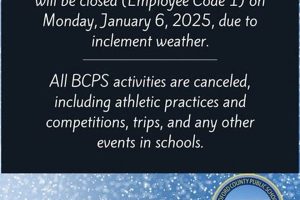Students in the Chicago Public School system are provided meals through a structured program designed to offer nutritious options throughout the academic year. These meals typically consist of a main dish, fruits and/or vegetables, and milk. Sample offerings might include a turkey and cheese sandwich with carrot sticks and apple slices, or pasta with marinara sauce, a side salad, and a banana. Free and reduced-price meals are available for eligible students based on family income.
Nutritious meals play a vital role in student well-being, contributing to academic performance, concentration, and overall health. A well-balanced diet can improve cognitive function, reduce behavioral problems, and boost energy levels, facilitating a positive learning environment. Historically, school meal programs have evolved significantly, with increasing emphasis on nutritional value, dietary guidelines, and accommodating diverse dietary needs and preferences. These programs are often federally funded and regulated to ensure students receive adequate nourishment.
This article will further explore various aspects of school food service, such as menu planning, nutritional guidelines, special dietary accommodations, community partnerships, and the impact of these programs on student health and academic success.
Accessing and utilizing school meal programs effectively can contribute significantly to student health and academic success. The following tips offer guidance for families and students.
Tip 1: Check the Monthly Menu: School menus are typically published online or distributed through school communications. Reviewing the menu in advance allows families to discuss meal options with students and anticipate potential dietary needs.
Tip 2: Explore Free and Reduced-Price Options: Families who meet specific income requirements may be eligible for free or reduced-price meals. Applications are generally available through the school or district website.
Tip 3: Pack Supplemental Items: While school meals strive to provide balanced nutrition, students can supplement them with healthy snacks or additional fruits and vegetables from home.
Tip 4: Communicate Dietary Restrictions: Schools can often accommodate allergies and other dietary restrictions. Parents or guardians should communicate these needs with the school’s food service department.
Tip 5: Encourage Healthy Choices: Promote healthy eating habits by discussing the importance of balanced nutrition with students and encouraging them to select a variety of food groups.
Tip 6: Provide Feedback: School food service programs often seek feedback on menu options and service quality. Sharing input can help improve the program for all students.
Tip 7: Stay Informed about Updates: Menu changes, special meal days, and program updates are often communicated through school channels. Staying informed ensures access to the most current information.
By utilizing these tips, families and students can maximize the benefits of school meal programs, fostering healthy eating habits and supporting overall well-being.
These practical strategies offer valuable insights into navigating school food services, leading to a concluding discussion on the future of school nutrition.
1. Nutrition
Nutrition forms the cornerstone of the Chicago Public Schools lunch menu. The program’s primary aim is to provide students with meals that support healthy growth, development, and academic performance. This commitment to nutrition translates into menus designed around established dietary guidelines, emphasizing fruits, vegetables, whole grains, lean proteins, and low-fat dairy. For instance, a menu might feature a baked chicken breast with brown rice and steamed broccoli, meeting several key nutritional requirements in a single meal. The nutritional value of these meals is further enhanced by limiting processed foods, added sugars, and unhealthy fats.
The positive impacts of a nutritionally sound school lunch program are multifaceted. Proper nutrition can improve cognitive function, enhance concentration, and boost energy levels, all of which contribute to academic success. Furthermore, healthy eating habits established during childhood can have lasting benefits, reducing the risk of chronic diseases later in life. Schools play a vital role in shaping these habits by providing consistent access to nutritious meals. The practical application of this understanding is evident in initiatives like offering fresh fruit and vegetable bars, incorporating whole-grain options, and providing nutrition education to students and families.
Ensuring nutritional adequacy within a large urban school district presents ongoing challenges. Balancing nutritional guidelines with student preferences, managing budgetary constraints, and accommodating diverse dietary needs require careful planning and execution. However, the focus on nutrition within the Chicago Public Schools lunch menu remains a crucial investment in student health and well-being, contributing significantly to their overall success. Connecting nutritional principles to practical meal planning and implementation ensures that the program effectively supports students’ nutritional needs now and fosters healthy habits for the future.
2. Accessibility
Accessibility within the Chicago Public Schools lunch menu framework refers to ensuring all students have equitable access to nutritious meals, regardless of their background or circumstances. This encompasses various facets, from physical access to the meal service itself to addressing socioeconomic factors that might create barriers.
- Geographic Location:
All students, regardless of the school they attend, should have access to a nutritious lunch. This necessitates efficient distribution systems and infrastructure capable of delivering meals to various school locations across the city, ensuring consistent availability.
- Socioeconomic Status:
Financial barriers should not prevent students from accessing meals. The free and reduced-price meal program plays a critical role in addressing socioeconomic disparities, ensuring eligible students receive meals regardless of their family’s ability to pay. Streamlined application processes and clear communication about eligibility criteria are crucial for maximizing participation.
- Dietary Needs:
Students with allergies, intolerances, or specific dietary requirements, such as vegetarianism or religious restrictions, should have access to suitable meal options. This involves providing alternative choices and clearly labeling ingredients to prevent accidental exposure to allergens or prohibited foods. Effective communication between parents, students, and food service staff is essential for accommodating diverse dietary needs.
- Disability Accommodations:
Students with physical disabilities should have barrier-free access to meal service areas, including appropriate seating arrangements and assistance when needed. This may involve adapting serving lines, providing accessible utensils, and ensuring dining areas are inclusive and accommodating.
By addressing these diverse facets of accessibility, the Chicago Public Schools lunch menu strives to ensure that all students receive the nutritional support necessary for their health, well-being, and academic success. This commitment to equitable access underscores the program’s vital role in supporting the entire student population.
3. Variety
Variety in the Chicago Public Schools lunch menu is essential for promoting healthy eating habits and ensuring student satisfaction. Offering a diverse selection of foods caters to different tastes and preferences, encourages students to try new things, and helps ensure they receive a wide range of nutrients. A monotonous menu can lead to decreased intake and nutritional deficiencies, impacting students’ overall health and academic performance.
- Exposure to Different Food Groups:
A varied menu exposes students to different food groups, including fruits, vegetables, whole grains, lean proteins, and dairy. This exposure is crucial for developing a well-rounded palate and ensuring students receive the essential nutrients for growth and development. For example, offering a variety of vegetables, from leafy greens like spinach to root vegetables like sweet potatoes, expands students’ nutritional intake and encourages acceptance of different flavors and textures.
- Catering to Diverse Preferences:
Student preferences vary widely based on cultural backgrounds, personal tastes, and dietary restrictions. A menu that offers a variety of options, including vegetarian, vegan, and gluten-free choices, ensures all students can find appealing and nutritious meals. This inclusivity promotes meal participation and prevents students from relying on less healthy alternatives.
- Preventing Menu Fatigue:
Serving the same meals repeatedly can lead to menu fatigue, resulting in decreased student interest and consumption. A rotating menu with diverse offerings keeps meals interesting and encourages students to look forward to lunchtime. This can involve incorporating seasonal ingredients, introducing new recipes, and offering themed meal days to maintain student engagement.
- Encouraging Healthy Eating Habits:
A varied menu helps students develop healthy eating habits by exposing them to a wide range of nutritious foods. This can lead to lifelong benefits, including reduced risk of chronic diseases and improved overall well-being. By offering appealing and diverse options within the school lunch program, students are more likely to adopt these healthy eating patterns beyond the school environment.
By prioritizing variety, the Chicago Public Schools lunch menu contributes significantly to student health, satisfaction, and the development of positive, long-term dietary habits. This multifaceted approach to menu planning ensures that meals are not only nutritious but also appealing and inclusive, maximizing student participation and supporting overall well-being.
4. Affordability
Affordability is a critical component of the Chicago Public Schools lunch menu, ensuring that all students have access to nutritious meals regardless of their family’s financial situation. Recognizing that food insecurity can significantly impact a student’s ability to learn and thrive, the program incorporates various strategies to mitigate financial barriers and promote equitable access to healthy meals.
- Free and Reduced-Price Meals:
The cornerstone of affordability within the program is the provision of free and reduced-price meals to eligible students. Eligibility is determined based on family income, ensuring that students from low-income households can receive meals at no cost or at a significantly reduced price. This program plays a vital role in alleviating food insecurity and ensuring that all students have access to the nutrition they need to succeed academically and maintain overall well-being. For example, a family of four earning below a certain income threshold would qualify for free or reduced-price meals, removing a significant financial burden.
- Subsidized Meal Programs:
Beyond individual student eligibility, some schools or districts may participate in subsidized meal programs, which provide funding to reduce meal costs for all students. These programs can help alleviate the financial burden on families, particularly in areas with high poverty rates. They also contribute to increased meal program participation, ensuring more students benefit from nutritious school meals. An example would be a school receiving federal funding to offer breakfast at a reduced cost for all students, regardless of individual eligibility.
- Community Partnerships:
Collaborations with local organizations and community partners can further enhance meal affordability. These partnerships may involve securing grants, donations, or in-kind contributions to support the meal program. For instance, a local food bank might partner with schools to provide fresh produce, reducing the cost of ingredients and increasing access to healthy options. Such partnerships contribute to the overall sustainability and affordability of the school meal program.
- Efficient Resource Management:
Efficient resource management within the school food service department is essential for maintaining affordability. This includes careful menu planning, minimizing food waste, and streamlining operational processes. By optimizing resource utilization, the program can maximize its impact and ensure that funds are used effectively to provide nutritious meals at an accessible cost to students. For example, implementing strategies to reduce food waste, such as portion control and efficient inventory management, can contribute to long-term cost savings.
By prioritizing affordability through these various strategies, the Chicago Public Schools lunch menu ensures that all students have consistent access to nutritious meals, supporting their academic success, health, and overall well-being. This commitment to equitable access is fundamental to the program’s mission and plays a vital role in fostering a supportive and inclusive learning environment for all students, regardless of their socioeconomic background.
5. Dietary Needs
Accommodating diverse dietary needs is a critical aspect of the Chicago Public Schools lunch menu. Students require specific dietary modifications for various reasons, including allergies, intolerances, medical conditions, and religious or ethical beliefs. Failing to address these needs can have serious health consequences and create barriers to equitable access to nutrition. The program recognizes the importance of providing inclusive meal options that support the health and well-being of all students.
- Food Allergies:
Food allergies are a significant concern within school meal programs. Reactions can range from mild discomfort to life-threatening anaphylaxis. Common allergens include peanuts, tree nuts, milk, eggs, soy, wheat, fish, and shellfish. The Chicago Public Schools lunch menu addresses this by providing allergen-free meal options, ensuring clear ingredient labeling, and implementing strict protocols to prevent cross-contamination in food preparation and service. For example, a student with a peanut allergy might receive a sunflower butter and jelly sandwich on gluten-free bread, with a side of fruit and vegetables, ensuring a safe and nutritious meal. Staff training on allergy awareness and emergency procedures is also crucial for managing potential allergic reactions effectively.
- Intolerances and Medical Conditions:
Beyond allergies, many students require dietary modifications due to intolerances or medical conditions. Lactose intolerance, celiac disease, and diabetes are common examples. The program accommodates these needs by offering lactose-free milk, gluten-free options, and meals that meet specific carbohydrate and sugar guidelines. For instance, a student with diabetes might receive a balanced meal with controlled portions of carbohydrates and protein, helping manage their blood sugar levels. Collaboration with parents, healthcare providers, and registered dietitians is essential for developing appropriate meal plans that address individual student needs effectively.
- Religious and Ethical Diets:
Religious and ethical beliefs often influence dietary choices. Vegetarianism, veganism, and halal or kosher diets are examples of dietary practices based on these beliefs. The program strives to accommodate these diverse needs by offering vegetarian and vegan options and ensuring meals comply with specific religious dietary laws when possible. For example, a vegetarian student might receive a bean burrito or a lentil soup with whole-grain bread, ensuring a protein-rich and culturally appropriate meal. Understanding and respecting these diverse dietary practices is crucial for fostering an inclusive and supportive meal program environment.
- Special Dietary Requests:
Students may have other special dietary requests not related to allergies, intolerances, or religious beliefs. These requests could be due to sensory sensitivities, picky eating habits, or specific nutritional needs. While accommodating all requests may not always be feasible, the program aims to be flexible and responsive whenever possible. This might involve offering simple substitutions, providing separate components of a meal, or working with families to develop individualized meal plans. Open communication and collaboration between parents, students, and food service staff are essential for addressing these unique dietary requests effectively.
By addressing these diverse dietary needs, the Chicago Public Schools lunch menu demonstrates a commitment to inclusivity, ensuring that all students have access to nutritious and safe meals that support their health, well-being, and academic success. This attention to individual dietary requirements underscores the program’s vital role in fostering a positive and supportive learning environment for every student. The programs responsiveness to these needs demonstrates its commitment to meeting the diverse requirements of a large student population, ultimately contributing to a more inclusive and supportive learning environment. Further, it highlights the importance of collaboration between schools, families, and healthcare professionals to effectively address these needs and ensure all students receive the nutritional support they require to thrive.
6. Cultural Relevance
Cultural relevance within the Chicago Public Schools lunch menu signifies the program’s responsiveness to the diverse cultural backgrounds of the student population. Meals offered reflect the varied culinary traditions represented within the city, fostering a sense of inclusivity and promoting appreciation for different cultures. This approach recognizes that food is not merely sustenance but also a powerful symbol of cultural identity and heritage. Connecting students with familiar flavors and dishes can increase meal acceptance and participation, especially among students from minority or immigrant communities. For example, incorporating dishes like jerk chicken with rice and peas, or chicken tikka masala with naan bread, can resonate with students from Caribbean or South Asian backgrounds, respectively. Conversely, a lack of cultural relevance can lead to meal refusal, contributing to nutritional deficiencies and reinforcing feelings of exclusion.
The practical significance of culturally relevant menus extends beyond simply increasing meal participation. Exposure to diverse cuisines can broaden students’ palates, encourage them to try new foods, and foster a greater understanding and appreciation for different cultures. This can contribute to a more inclusive and welcoming school environment, promoting cross-cultural understanding and respect among students. Furthermore, culturally relevant meals can serve as a valuable educational tool, sparking conversations about different culinary traditions, food preparation techniques, and the cultural significance of food in various societies. Schools can further enhance this educational aspect by incorporating cultural themes into meal planning, providing information about the origins of different dishes, and organizing events that celebrate the culinary diversity of the student body. This multifaceted approach reinforces the importance of cultural awareness and sensitivity within the school community.
Integrating cultural relevance into menu planning presents ongoing challenges. Balancing diverse preferences within a large student population requires careful consideration and community input. Regular feedback mechanisms, collaboration with families and community members, and ongoing menu evaluations are crucial for ensuring the program remains responsive to the evolving cultural landscape of the student body. Successfully addressing these challenges strengthens the program’s ability to foster an inclusive and supportive environment where all students feel represented and valued. Ultimately, a culturally relevant lunch menu contributes not only to student health and well-being but also to a richer, more vibrant school community that celebrates diversity and promotes intercultural understanding.
7. Community Feedback
Community feedback plays a vital role in shaping the Chicago Public Schools lunch menu. This feedback loop, encompassing input from students, parents, teachers, and community members, ensures the program remains responsive to the evolving needs and preferences of those it serves. Effective feedback mechanisms, such as surveys, focus groups, and online platforms, provide valuable insights into menu satisfaction, dietary needs, cultural preferences, and areas for improvement. For example, feedback might reveal a need for more vegetarian options, adjustments to portion sizes, or the incorporation of specific cultural dishes. This information directly influences menu planning, procurement decisions, and food preparation practices, ensuring the program remains aligned with community expectations and dietary requirements. Without consistent community input, the program risks becoming detached from the needs of its constituents, potentially leading to decreased participation and dissatisfaction.
The practical significance of community feedback extends beyond menu adjustments. It fosters a sense of ownership and collaboration among stakeholders, strengthening the connection between the school food service program and the community it serves. When individuals feel their voices are heard and their input valued, they become more invested in the program’s success. This can lead to increased parental involvement, greater student participation, and stronger community support for school nutrition initiatives. Furthermore, community feedback provides valuable insights into the effectiveness of existing programs and identifies potential areas for innovation and improvement. For instance, feedback might highlight the need for enhanced nutrition education programs, improved communication strategies, or partnerships with local food producers to increase access to fresh, healthy ingredients. This iterative process of feedback and adaptation ensures the program remains dynamic and responsive to the ever-changing needs of the community.
Cultivating meaningful community feedback requires ongoing effort and a commitment to open communication. Establishing accessible feedback channels, actively soliciting input from diverse stakeholders, and transparently communicating how feedback is utilized are crucial for building trust and fostering a culture of continuous improvement. Challenges such as ensuring equitable representation among feedback providers, addressing conflicting preferences, and effectively managing large volumes of data require careful consideration. However, prioritizing community feedback remains essential for ensuring the Chicago Public Schools lunch menu effectively serves the needs of its diverse student population and contributes to their overall health, well-being, and academic success. By actively listening to and incorporating community input, the program strengthens its connection to the community, enhances its effectiveness, and reinforces its commitment to providing nutritious, appealing, and culturally relevant meals for all students.
Frequently Asked Questions
This section addresses common inquiries regarding the Chicago Public Schools lunch menu, providing clear and concise information to promote understanding of the program’s key features and operations.
Question 1: How can one access the current Chicago Public Schools lunch menu?
Menus are typically available online through the Chicago Public Schools website and may also be distributed through individual schools or parent communication platforms. Availability may vary by school and time of year.
Question 2: What options are available for students with dietary restrictions or allergies?
The program strives to accommodate various dietary needs, including allergies, intolerances, and religious restrictions. Parents should contact their child’s school or the food service department to discuss specific requirements and available accommodations. Documentation from healthcare providers may be required.
Question 3: How does the free and reduced-price meal program operate?
Eligibility for free and reduced-price meals is based on family income and household size. Applications are available through the Chicago Public Schools website or individual schools. Specific income thresholds and application guidelines can be found with the application materials. Approval processes and timelines may vary.
Question 4: How are menus developed, and what nutritional guidelines are followed?
Menus are developed by registered dietitians and food service professionals, adhering to federal nutrition guidelines and considering factors such as student preferences, cultural relevance, and dietary needs. Specific nutritional information for each meal may be available upon request.
Question 5: How can one provide feedback or suggestions regarding the school lunch program?
Feedback channels vary by school and district. Contacting the school principal, food service director, or utilizing online feedback forms are common methods for submitting comments or suggestions. Designated contact information is typically available through school websites or parent communication platforms.
Question 6: How are concerns regarding food quality or service addressed?
Concerns should be directed to the school’s food service staff or administration. Specific procedures for addressing complaints or concerns are typically outlined in school or district policies. Designated contact information should be available through the school or district.
Understanding these key aspects of the Chicago Public Schools lunch menu contributes to effective utilization of the program and ensures all students have access to the nutritional support they need. Families are encouraged to utilize available resources and communicate directly with school officials to address specific questions or concerns.
This FAQ section serves as a starting point for understanding the program. Additional information and resources are available through the Chicago Public Schools website and individual schools.
Chicago Public Schools Lunch Menu
This exploration of the Chicago Public Schools lunch menu has highlighted its multifaceted nature, encompassing nutritional value, accessibility, variety, affordability, accommodation of dietary needs, cultural relevance, and the importance of community feedback. Each element contributes significantly to the program’s overall effectiveness in supporting student health, well-being, and academic success. From ensuring nutritional adequacy to addressing socioeconomic disparities and celebrating cultural diversity, the program strives to provide a comprehensive approach to school nutrition.
The ongoing commitment to refining and improving the Chicago Public Schools lunch menu underscores its vital role in the educational landscape. Continued focus on these key elements will be crucial for ensuring that the program remains responsive to the evolving needs of the student population and continues to play a pivotal role in fostering a healthy and supportive learning environment for all students. Sustained collaboration among schools, families, and community partners will further strengthen the program’s impact and contribute to the long-term health and well-being of Chicago’s students.







